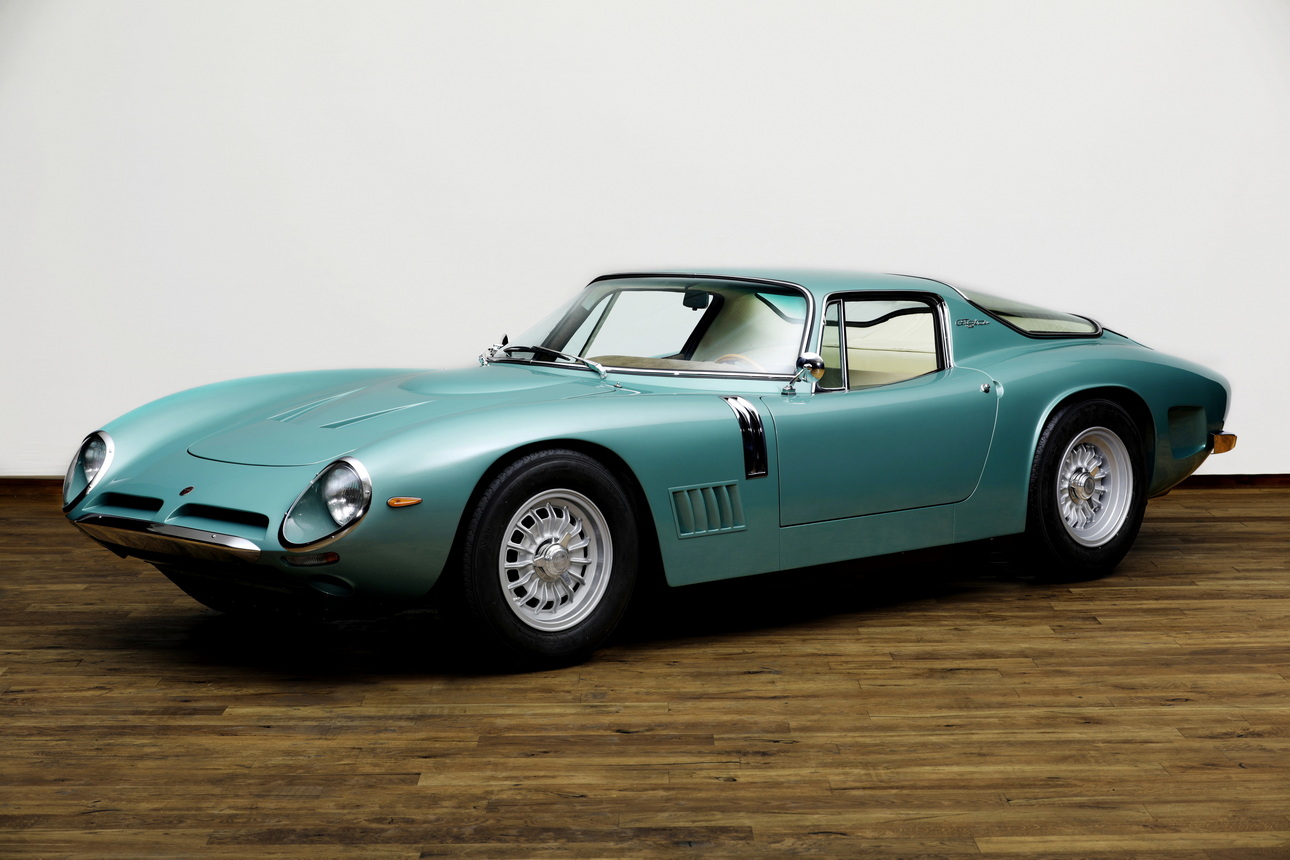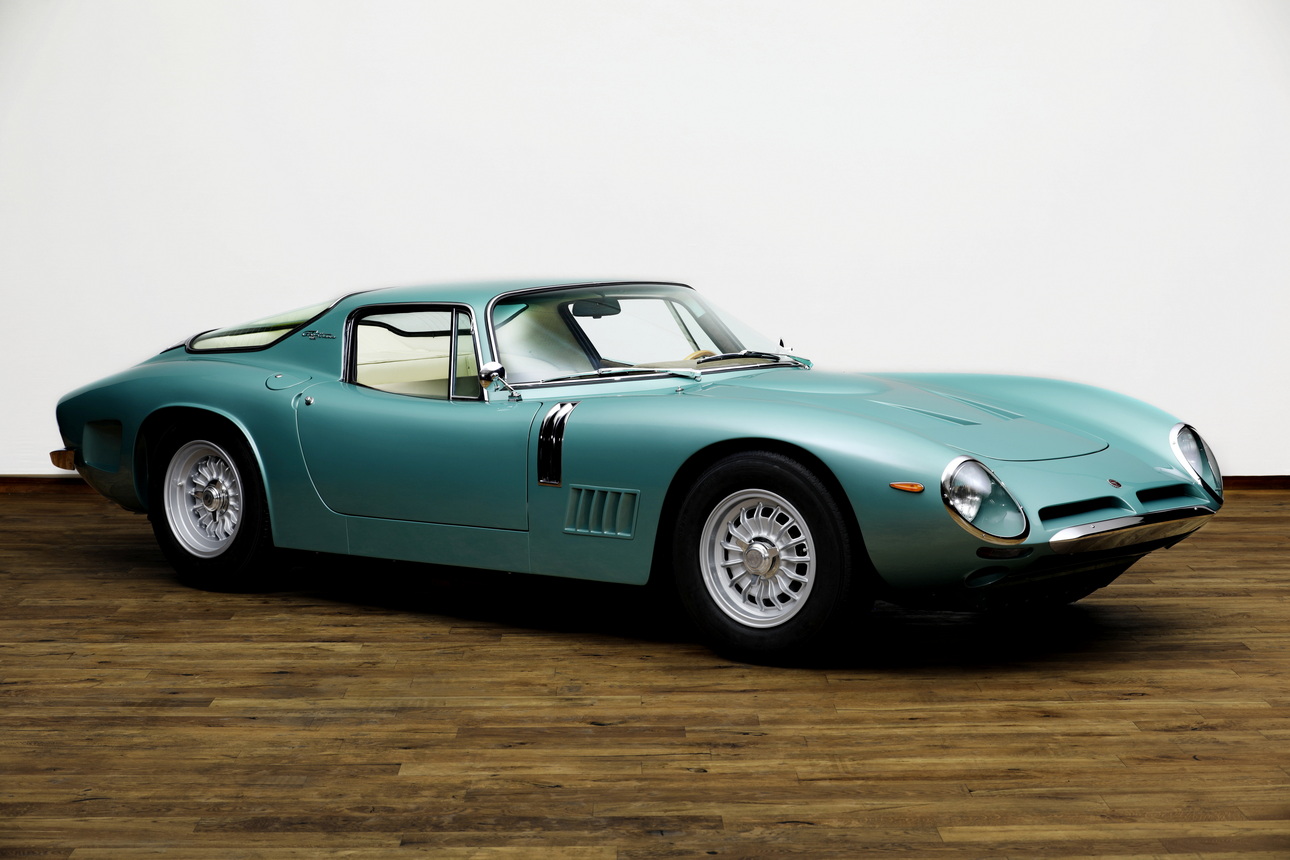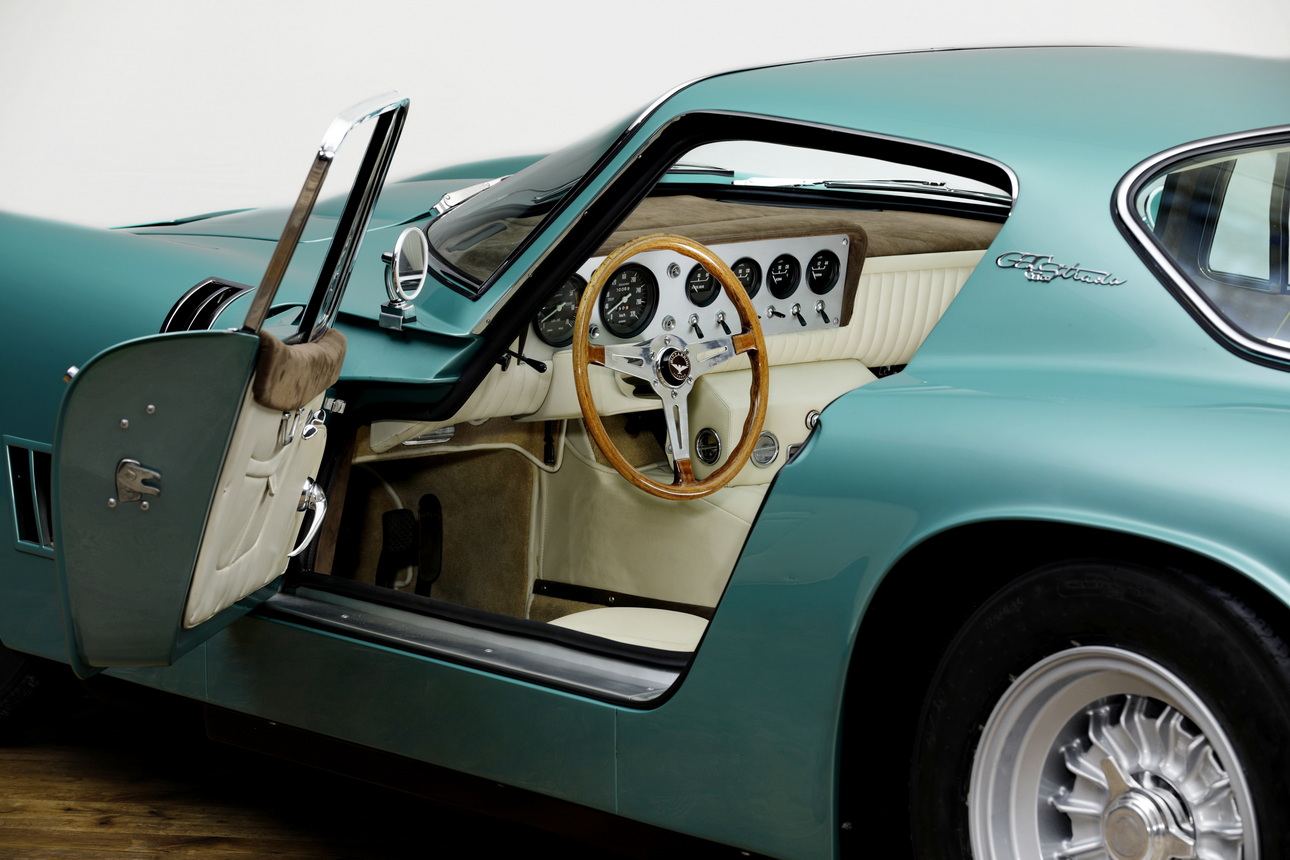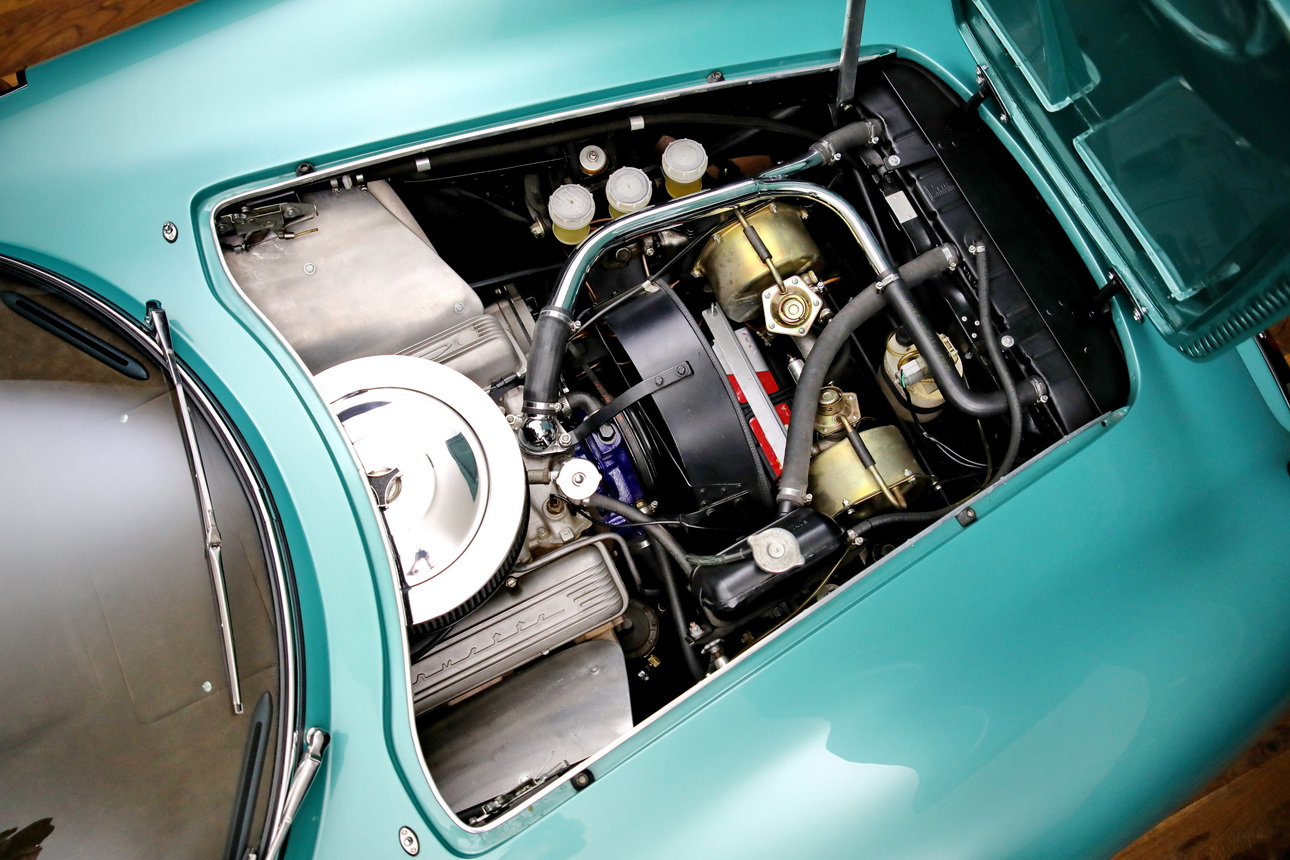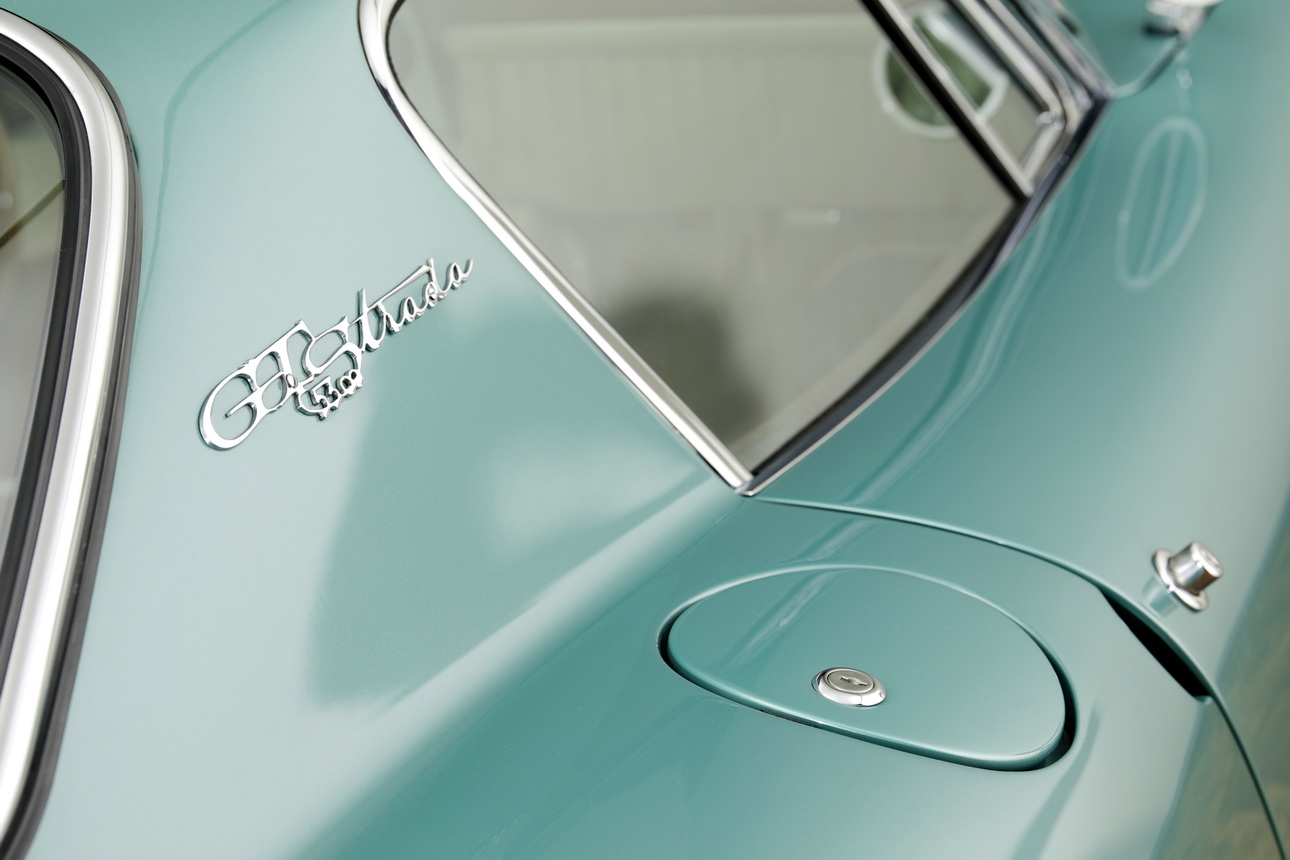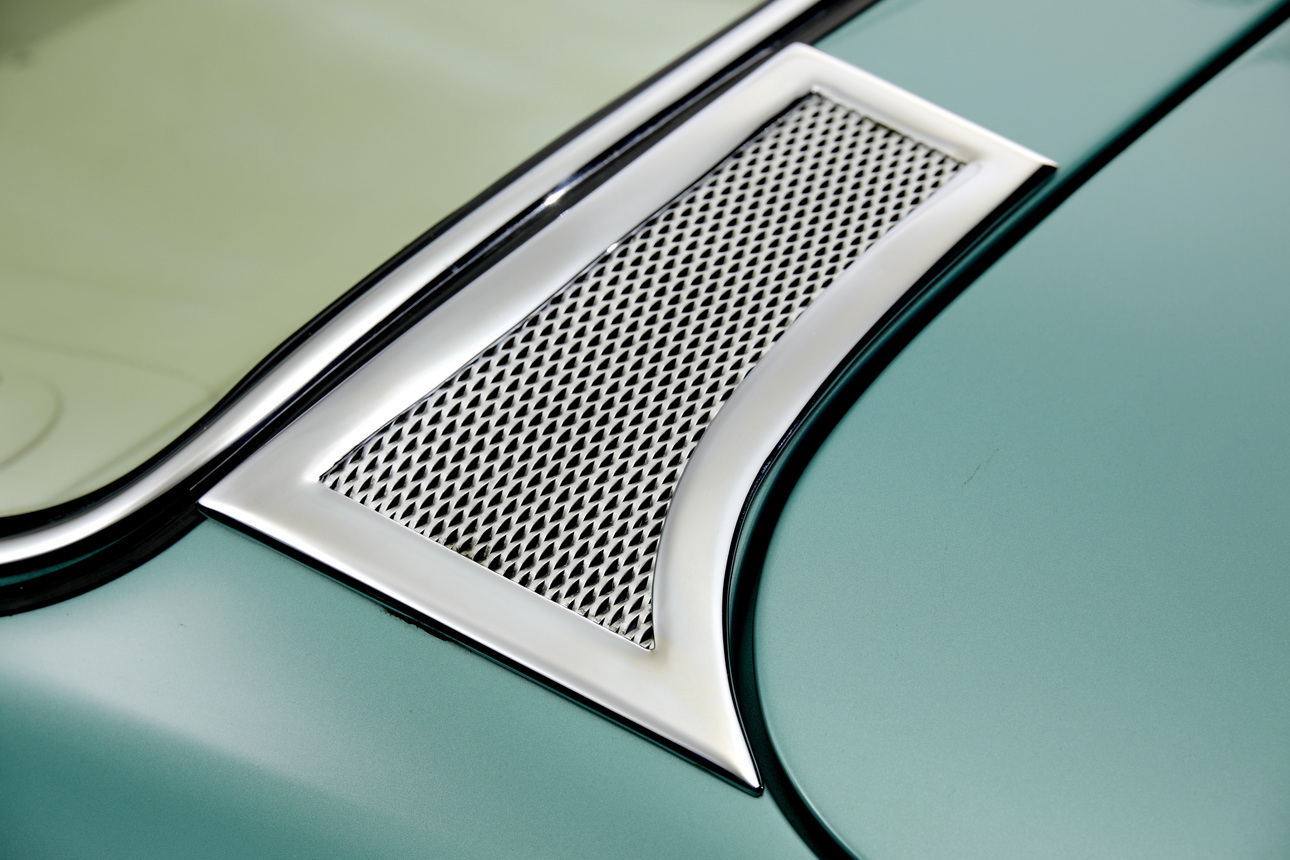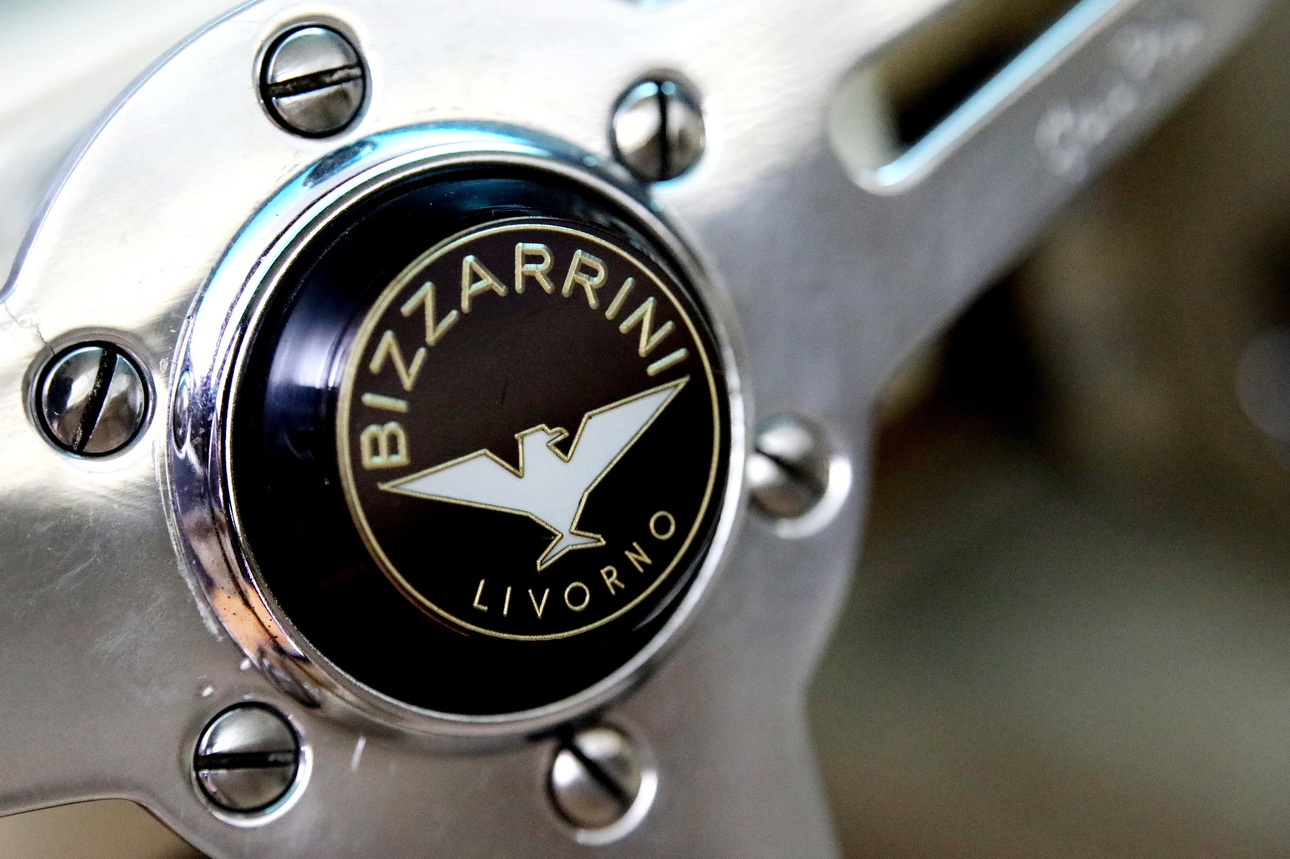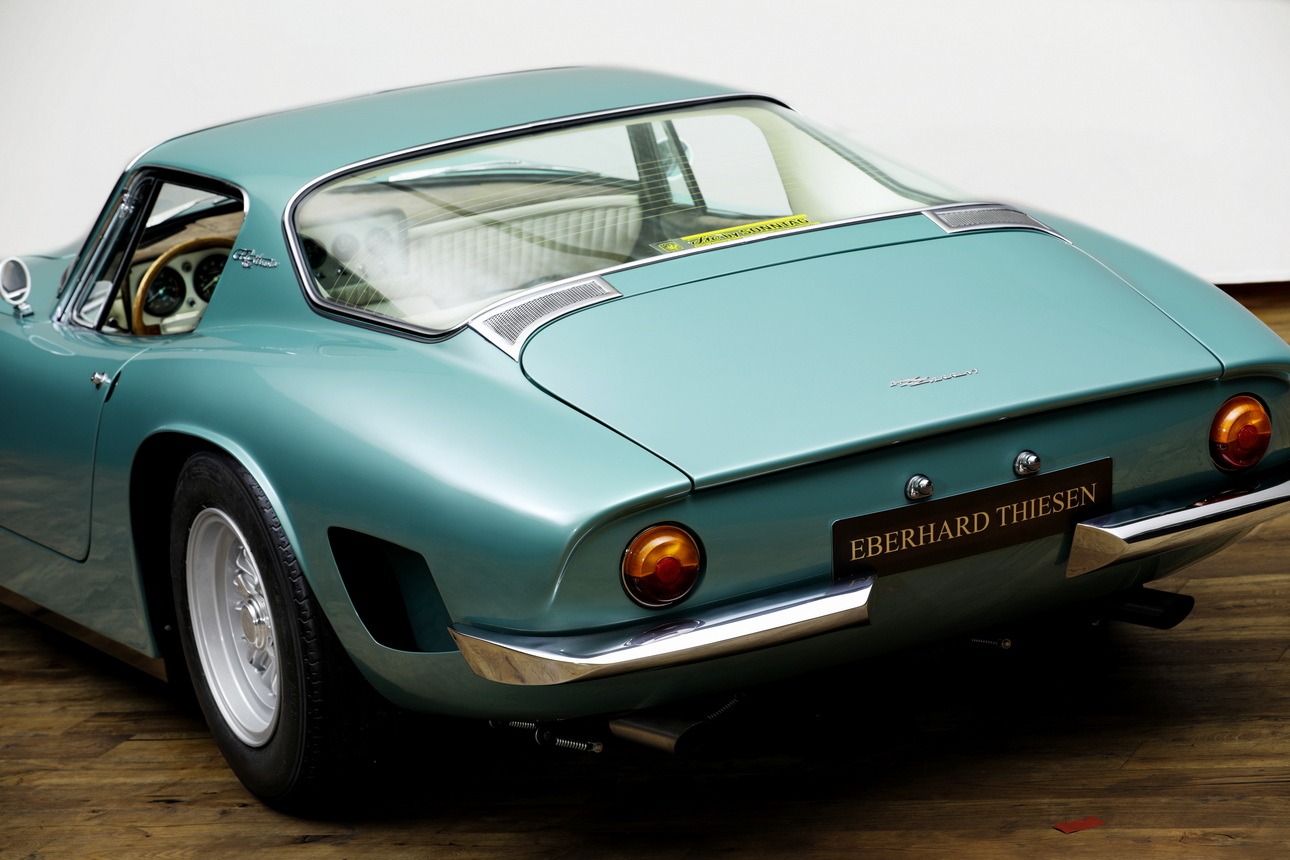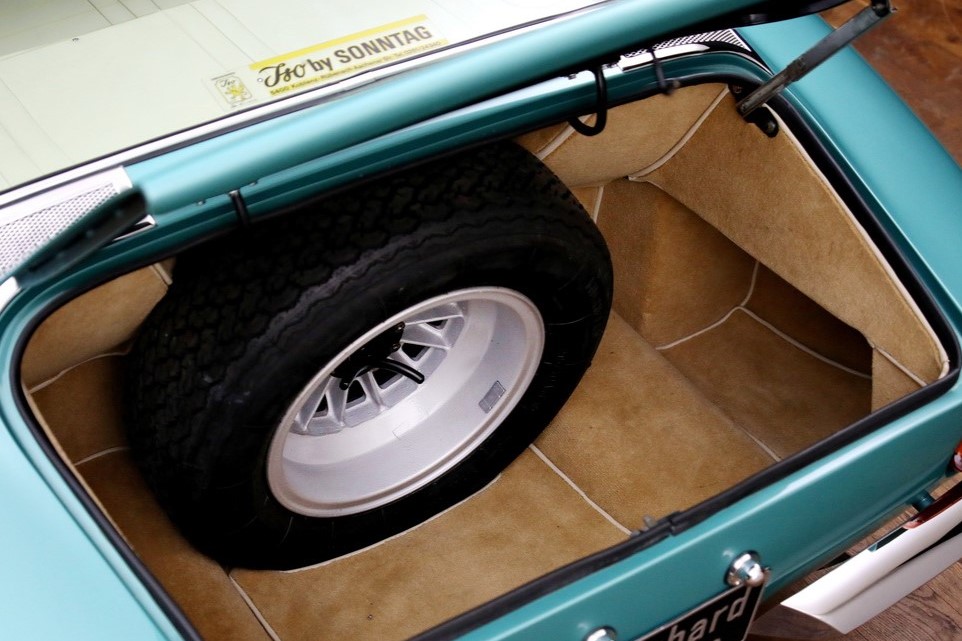Bizzarrini GT Strada 5300
Highlights
Data & Facts
This Automobile
This Bizzarrini GT Strada 5300 was completed in 1968 at the factory in Livorno (Italy). In the following, the ultra-low sports car most likely went to Germany to its first owner via the authorised concessionaire Sonntag for the Bizzarrini and ISO brands in Koblenz. It was first registered in Germany on 23 July 1969. A later German vehicle registration document lists an owner in Duisburg from June 1975 and another owner in Hagen (names known) from March 1977.
According to a condition report, the sports car was offered at auction in 1991 and later fell into oblivion over several years. In 2001, it was rediscovered by a Dutchman with a mileage of only about 25,000 km and was to undergo a comprehensive restoration. The vehicle was completely dismantled into its components for detailed and extensive work. An article about the owner and the planned restoration appeared in the magazine ‘Classic & Sports Car’ magazine in February 2002 (see page 5).
As the Dutch owner already owned another similar Bizzarrini model, he sold this example in 2002 as a restoration project to its penultimate owner, who continued and completed the restoration between 2005 and 2007 at specialist workshops in Germany and Italy. This owner then kept the completed car in beautiful condition in his collection for a total of 20 years before it was purchased by its current owner in Germany in autumn 2023.
This Bizzarrini GT Strada 5300 is in excellent condition and perfectly reflects the exclusive and eccentric flair of an Italian small-series manufacturer. The turquoise green metallic paintwork with a light-coloured interior also contributes impressively to its sophisticated extravagance. Moreover, the advanced but solid US drive technology of the powerful V8 engine from the Chevrolet Corvette with 355 hp is also a strong feature of the Bizzarrini. An owner can be sure that the spectacular design of the ultra-flat body always attracts attention and admiration. A Bizzarrini is a racy and purist ‘driver's car’ that offers an incomparable experience – both on the road and at any high-profile concours event.
Model History
The Bizzarrini GT 5300 dates back to Italian automobile engineer Giotto Bizzarrini, who worked first at Alfa Romeo and then at Ferrari from the mid-1950s onwards. At Ferrari, he was involved in the development of the 250 GT and 250 GTO. Later on, he designed the V12 engine in the Lamborghini 350/400 GT.
The Bizzarrini GT 5300 is historically and technically closely related to the Iso Grifo model from Renzo Rivolta's Milan-based sports car manufacturer Iso. Giotto Bizzarrini had been running his own engineering office since 1962 and designed the IR 300 model for Iso, followed later by the two-seater coupé A3/L (L for Lusso). The principle was ‘best of both worlds’ – combining Italian design and craftsmanship with sophisticated, powerful US large-scale series production technology from General Motors. In addition, Bizzarrini developed a racing version of the Iso A3/L, which was presented as the Iso Grifo A3/C (C for Competizione) at the 1963 Turin Motor Show and had a completely independent design but the same drive technology as the A3/L.
In 1965, Renzo Rivolta and Giotto Bizzarrini broke off their business relationship. Bizzarrini subsequently manufactured the A3/C model under his own name as the Bizzarrini GT 5300 in two versions: a road version known as the ‘Strada’ and a competition version named the ‘Corsa’.
The GT 5300 was based on a semi-monocoque made of aluminium sheets. The rear suspension, with a rigid De Dion axle on four trailing arms and a Watt linkage, was the same as that of the Iso Grifo (formerly A3/L), while the front suspension, with recirculating ball steering and wheels suspended individually on double wishbones, was its own design. In order to position the weight of the engine as centrally as possible, it was located far behind the front axle – in other words, a front mid-engine. The arrangement of three fuel tanks was also designed to optimise weight: one tank was located in each side sill below the doors, and a third tank was installed behind the seats. As a result, the Bizzarrini achieved a weight distribution of 52% at the front and 48% at the rear.
On the engine side, the Bizzarrini GT 5300 had a 5.3-litre V8 from the Chevrolet 327 Corvette. Modified intake and exhaust ports, a modified crankshaft and different carburettor systems delivered power outputs ranging from 355 hp (Strada) to over 400 hp (Corsa).
The body was always made of aluminium. With a height of only 1.11 metres, it was extremely low and, with an air resistance coefficient of only 0.30, was considered particularly aerodynamic. The recessed headlights with Plexiglas cover and the curved panoramic windscreen were striking features. The design is attributed to Giorgio Giugiaro at Bertone. Most literature sources today cite around 100 completed examples of the GT 5300.
This Automobile
This Bizzarrini GT Strada 5300 was completed in 1968 at the factory in Livorno (Italy). In the following, the ultra-low sports car most likely went to Germany to its first owner via the authorised concessionaire Sonntag for the Bizzarrini and ISO brands in Koblenz. It was first registered in Germany on 23 July 1969. A later German vehicle registration document lists an owner in Duisburg from June 1975 and another owner in Hagen (names known) from March 1977.
According to a condition report, the sports car was offered at auction in 1991 and later fell into oblivion over several years. In 2001, it was rediscovered by a Dutchman with a mileage of only about 25,000 km and was to undergo a comprehensive restoration. The vehicle was completely dismantled into its components for detailed and extensive work. An article about the owner and the planned restoration appeared in the magazine ‘Classic & Sports Car’ magazine in February 2002 (see page 5).
As the Dutch owner already owned another similar Bizzarrini model, he sold this example in 2002 as a restoration project to its penultimate owner, who continued and completed the restoration between 2005 and 2007 at specialist workshops in Germany and Italy. This owner then kept the completed car in beautiful condition in his collection for a total of 20 years before it was purchased by its current owner in Germany in autumn 2023.
This Bizzarrini GT Strada 5300 is in excellent condition and perfectly reflects the exclusive and eccentric flair of an Italian small-series manufacturer. The turquoise green metallic paintwork with a light-coloured interior also contributes impressively to its sophisticated extravagance. Moreover, the advanced but solid US drive technology of the powerful V8 engine from the Chevrolet Corvette with 355 hp is also a strong feature of the Bizzarrini. An owner can be sure that the spectacular design of the ultra-flat body always attracts attention and admiration. A Bizzarrini is a racy and purist ‘driver's car’ that offers an incomparable experience – both on the road and at any high-profile concours event.
Model History
The Bizzarrini GT 5300 dates back to Italian automobile engineer Giotto Bizzarrini, who worked first at Alfa Romeo and then at Ferrari from the mid-1950s onwards. At Ferrari, he was involved in the development of the 250 GT and 250 GTO. Later on, he designed the V12 engine in the Lamborghini 350/400 GT.
The Bizzarrini GT 5300 is historically and technically closely related to the Iso Grifo model from Renzo Rivolta's Milan-based sports car manufacturer Iso. Giotto Bizzarrini had been running his own engineering office since 1962 and designed the IR 300 model for Iso, followed later by the two-seater coupé A3/L (L for Lusso). The principle was ‘best of both worlds’ – combining Italian design and craftsmanship with sophisticated, powerful US large-scale series production technology from General Motors. In addition, Bizzarrini developed a racing version of the Iso A3/L, which was presented as the Iso Grifo A3/C (C for Competizione) at the 1963 Turin Motor Show and had a completely independent design but the same drive technology as the A3/L.
In 1965, Renzo Rivolta and Giotto Bizzarrini broke off their business relationship. Bizzarrini subsequently manufactured the A3/C model under his own name as the Bizzarrini GT 5300 in two versions: a road version known as the ‘Strada’ and a competition version named the ‘Corsa’.
The GT 5300 was based on a semi-monocoque made of aluminium sheets. The rear suspension, with a rigid De Dion axle on four trailing arms and a Watt linkage, was the same as that of the Iso Grifo (formerly A3/L), while the front suspension, with recirculating ball steering and wheels suspended individually on double wishbones, was its own design. In order to position the weight of the engine as centrally as possible, it was located far behind the front axle – in other words, a front mid-engine. The arrangement of three fuel tanks was also designed to optimise weight: one tank was located in each side sill below the doors, and a third tank was installed behind the seats. As a result, the Bizzarrini achieved a weight distribution of 52% at the front and 48% at the rear.
On the engine side, the Bizzarrini GT 5300 had a 5.3-litre V8 from the Chevrolet 327 Corvette. Modified intake and exhaust ports, a modified crankshaft and different carburettor systems delivered power outputs ranging from 355 hp (Strada) to over 400 hp (Corsa).
The body was always made of aluminium. With a height of only 1.11 metres, it was extremely low and, with an air resistance coefficient of only 0.30, was considered particularly aerodynamic. The recessed headlights with Plexiglas cover and the curved panoramic windscreen were striking features. The design is attributed to Giorgio Giugiaro at Bertone. Most literature sources today cite around 100 completed examples of the GT 5300.

